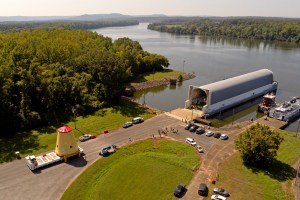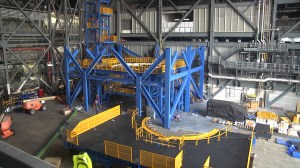NASA Expands Human Exploration Rover Challenge to Middle Schools
By Wayne Smith Following a 2024 competition that garnered international attention, NASA is expanding its Human Exploration Rover Challenge (HERC) to include a remote control division and inviting middle school students to participate. The 31st annual competition is scheduled for April 11-12, 2025, at the U.S. Space & Rocket Center, near NASA’s Marshall Space Flight […]

4 min read
Preparations for Next Moonwalk Simulations Underway (and Underwater)
By Wayne Smith
Following a 2024 competition that garnered international attention, NASA is expanding its Human Exploration Rover Challenge (HERC) to include a remote control division and inviting middle school students to participate.
The 31st annual competition is scheduled for April 11-12, 2025, at the U.S. Space & Rocket Center, near NASA’s Marshall Space Flight Center in Huntsville, Alabama. HERC is managed by NASA’s Southeast Regional Office of STEM Engagement at Marshall. The HERC 2025 Handbook has been released, with guidelines for the new remote control (RC) division – ROVR (Remote-Operated Vehicular Research) – and detailing updates for the human-powered division.
“Our RC division significantly lowers the barrier to entry for schools who don’t have access to manufacturing facilities, have less funding, or who are motivated to compete but don’t have the technical mentorship required to design and manufacture a safe human-powered rover,” said Chris Joren, HERC technical coordinator. “We are also opening up HERC to middle school students for the first time. The RC division is inherently safer and less physically intensive, so we invite middle school teams and organizations to submit a proposal to be a part of HERC 2025.”
Another change for 2025 is the removal of task sites on the course for the human-powered rover division, allowing teams to focus on their rover’s design. Recognized as NASA’s leading international student challenge, the 2025 challenge aims to put competitors in the mindset of the Artemis campaign as they pitch an engineering design for a lunar terrain vehicle – they are astronauts piloting a vehicle, exploring the lunar surface while overcoming various obstacles.
“The HERC team wanted to put together a challenge that allows students to gain 21st century skills, workforce readiness skills, and skills that are transferable,” said Vemitra Alexander, HERC activity lead. “The students have opportunities to learn and apply the engineering design process model, gain public speaking skills, participate in community outreach, and learn the art of collaborating with their peers. I am very excited about HERC’s growth and the impact it has on the students we serve nationally and internationally.”
Students interested in designing, developing, building, and testing rovers for Moon and Mars exploration are invited to submit their proposals to NASA through Sept. 19.
More than 1,000 students with 72 teams from around the world participated in the 2024 challenge as HERC celebrated its 30th anniversary as a NASA competition. Participating teams represented 42 colleges and universities and 30 high schools from 24 states, the District of Columbia, Puerto Rico, and 13 other nations from around the world.
“We saw a massive jump in recognition, not only from within the agency as NASA Chief Technologist A.C. Charania attended the event, but with several of our international teams meeting dignitaries and ambassadors from their home countries to cheer them on,” Joren said. “The most impressive thing will always be the dedication and resilience of the students and their mentors. No matter what gets thrown at these students, they still roll up to the start line singing songs and waving flags.”
HERC is one of NASA’s eight Artemis Student Challenges reflecting the goals of the Artemis campaign, which seeks to land the first woman and first person of color on the Moon while establishing a long-term presence for science and exploration. NASA uses such challenges to encourage students to pursue degrees and careers in the STEM fields of science, technology, engineering, and mathematics.
Since its inception in 1994, more than 15,000 students have participated in HERC – with many former students now working at NASA, or within the aerospace industry.
To learn more about HERC, please visit:
https://www.nasa.gov/roverchallenge/home/index.html
Taylor Goodwin
Marshall Space Flight Center, Huntsville, Ala.
256.544.0034
taylor.goodwin@nasa.gov
Share
Details
Related Terms
What's Your Reaction?



















.jpg?#)







































